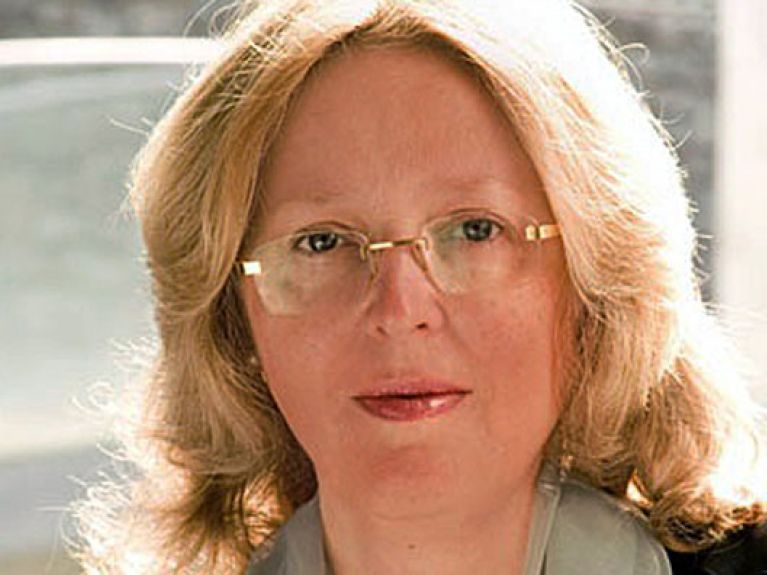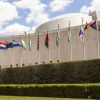Mechtild Rössler, World Heritage Centre
Ambassadors and senior German employees in international organizations present insights into their work in the deutschland.de series “Foreign posting”.

Ms Rössler, there were 241 World Heritage Sites when you began working at UNESCO 25 years ago. Today there are over 1,000. How has the work of the World Heritage Centre changed during this time?
Our work has changed a lot because our World Heritage List includes increasing numbers of sites that are fraught with problems. Some are located in areas affected by war or conflict such as in Syria, while others are damaged by natural disasters such as in Kathmandu in Nepal. What is more, we have fewer and fewer resources at our disposal to help the individual sites. The 192 states pay no more into the World Heritage Fund than they did before – 1 percent of their contribution to UNESCO – despite the fact that the number of World Heritage Sites is constantly growing. Unfortunately, the USA is not paying anything at the moment – neither to UNESCO nor to the World Heritage Fund – because Palestine became a member of UNESCO and Bethlehem was included on the World Heritage List. Naturally we really notice the absence of this money. In addition, the nomination process has become a great deal more complex and comprehensive.
You have been the director of the UNESCO World Heritage Centre since September 2015. In view of all these problems, do you find your work nowadays more a burden than a pleasure? What is your biggest concern?
I am still entrusted with one of the most wonderful tasks: namely to protect our world’s extraordinary cultural and natural heritage. Of course we have a wide range of concerns: climate change, natural disasters, military disputes and conflicts, or the systematic destruction of our common human heritage by terrorism. The real drama is that we are unable to provide the necessary support at the local level due to a lack of government or privately-funded aid. What does it say about us as a global community if we are supposed to protect our extraordinary universal heritage for future generations but are unable to do so?
At an international conference on safeguarding Syria’s cultural heritage held at the German Federal Foreign Office in early June 2016, extensive emergency measures were agreed to protect Syrian cultural heritage. What is at risk or has been damaged, and how seriously? And what opportunities do you see?
To see for myself, I travelled with a small team to Syria at the end of April to conduct an initial stock-take in Damascus and Palmyra. Though the trip was doubtless very dangerous, it was also very necessary. The situation in Palmyra was shocking as far as the museum there is concerned. A bomb had torn through two floors, right down to the basement. The artworks had been removed by the antiquities department shortly before the arrival of the group known as Islamic State (IS). Two people were injured in the process. The large statues remained and had their heads knocked off. That is relatively easy to restore, however. On the other hand, the entire basement is full of secondary objects, and it is difficult to carry out the work of cleaning and tidying up because the area is still a war zone. The archaeological site is fairly well preserved, and only individual elements such as the Arch of Triumph and the Temple of Bel have been partially destroyed. We already staged a major Syria conference at UNESCO back in 2014. The Berlin conference in June 2016 was intended to update the action plan to include concrete short-, medium- and long-term activities, among other things. If the conflict ends soon I see a great opportunity, as preserving world heritage is important for the population, for their identity and for their cultural, social and economic future. Bear in mind that Palmyra attracted large numbers of tourists before the war – the city, with its 50,000 inhabitants, lived to all intents and purposes from the direct and indirect revenues generated by its world heritage.
What sort of leverage do you have to assert your interests? And how successful have you been so far in using this leverage?
We have many possibilities, firstly on a diplomatic level: we remind states of the commitments they entered into when they signed the Convention, an international legal instrument: namely to do everything in their power to protect this heritage, not only on their own territory but also on the territory of other states. In the case of considerable problems in the sites, the committee can send a Monitoring Mission, place the site on the List of World Heritage in Danger, or even remove it from the World Heritage List, as happened with the Dresden Elbe Valley. This is extremely rare, however, as states generally understand the benefits of a World Heritage listing: losing this status would mean a huge loss of prestige for most, not to mention a considerable economic setback given that the listing is often important for tourism and regional development. We have had a number of successes in which I was also involved: the El Viscaino area in Mexico was protected and a large salt production plant not built, while a dam that would have endangered the Durmitor National Park in Montenegro was also not built.
How many World Heritage Sites have you visited yourself? And which made the greatest impression on you personally?
I would need to calculate the precise number now that the new sites have been added in 2016, but I guess I have visited roughly 60 to 70 percent – after all, I have been working here in a variety of positions for 25 years. I have often been impressed, for example by the Ngorongoro Crater in Tanzania, the rice terraces in the Philippines, Wadi Rum in Jordan, Angkor in Cambodia and Uluru-Kata Tjuta National Park in Australia. I have also visited some really extraordinary sites that the general public cannot even view due to a lack of access, such as St. Kilda in the North Atlantic. The only people allowed on this archipelago are scientists and military personnel. I would really like to see the British overseas territories of Henderson Island and Gough Island, but I do not have the time – it would take me six weeks by boat to reach Gough Island. Soon I will be travelling for the first time to Bhutan, however, a country in which we do not have a single World Heritage Site as yet. They need expert support there, and I am happy to oblige.

